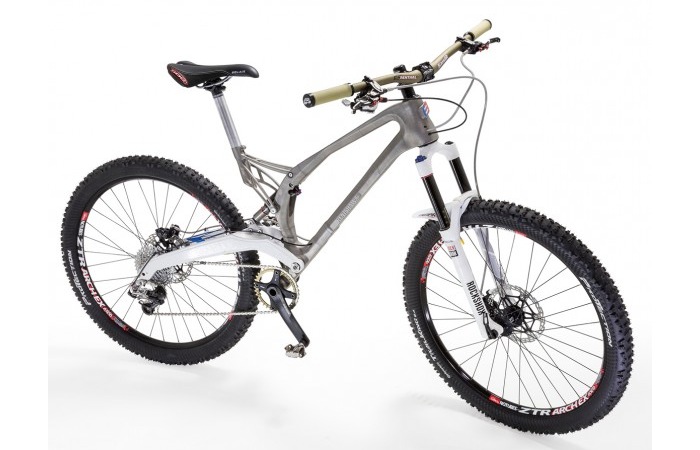It already seems a long time ago, albeit only in 2012, that specialist cycle manufacturing websites were beginning to refer to 3D printers being used to produce not just prototypes, but also the end product cycle. Back then it was all about, one-off, customised bikes. It’s yet another sign of how fast 3D printing is progressing from possibility to production method for so many products now.
Whilst there are now a number of existing 3D printing related cycle projects around, both industrially and on the home maker front, such as this innovative carbon fiber bike frame Instructable, the acceleration of industrial 3D printed bikes has also reached the finish line.
Renishaw is currently the UK’s only manufacturer of additive manufacturing machines that produce metal. The company has recently teamed up with Empire Cycles — a leading British bicycle design and manufacturing company to create the world’s first production 3D printed metal bike frame, as touched upon by Rachel in her ace Euromold report just over a month ago here.
The additive tech from Renishaw has allowed Empire to create a titanium frame – manufactured in titanium alloy sections then bonded together – that is extremely strong and yet a third lighter than the original.
The duo of companies involved list the additive advantages as:
• Design freedom
• Rapid iterations; flexibility to make design improvements right up to production
• Ability to make shapes derived by topological optimisation
• Ultimate customisation and tailoring – make one-offs as easily as production batches
Construction:
• Complex shape with internal strengthening features
• Hollow structures
• Built in features, such as the rider’s name
• Performance, titanium alloy
• Seat post bracket 44% lighter than aluminium alloy version
• Extremely strong – tested to EN 14766
• Corrosion resistant and long lasting.
Construction of two-wheeled transport has already produced some other exciting engineering examples for the eager reader, such as: the energica superbike using Selective Laser Sintering (SLS) in Polyamide-based ‘Windform’ material; titanium motorbike parts via Direct Metal Laser Sintering (DMLS) using EOS’s M270; and custom motorbike parts using Stratasys’ Fortus 400mc production system.




